When Ensign Sarah Mitchell graduated from Virginia Tech in 2017 and joined the Navy, her proud mom accepted that she might never return home if a war broke out.
But Betsy Mitchell never expected to lose her 23-year-old daughter to a horrific training accident in the Red Sea.
“If she was in battle, I would understand this,” she said. “This wasn’t supposed to happen. We are broken.”
After departing the guided-missile destroyer Jason Dunham on July 8, 2018, Ensign Mitchell was thrown from a rigid hull inflatable boat — or RHIB — when the driver attempted the “donut,” according to an internal investigation obtained by Navy Times.
She was struck by the propeller, suffered severe head injuries and was pronounced dead a few hours later at a Jordanian hospital.
“There’s a lot of people who saw something that they shouldn’t have,” said her mom. “The only thing I want to see is change, because this wasn’t supposed to happen.”
RELATED
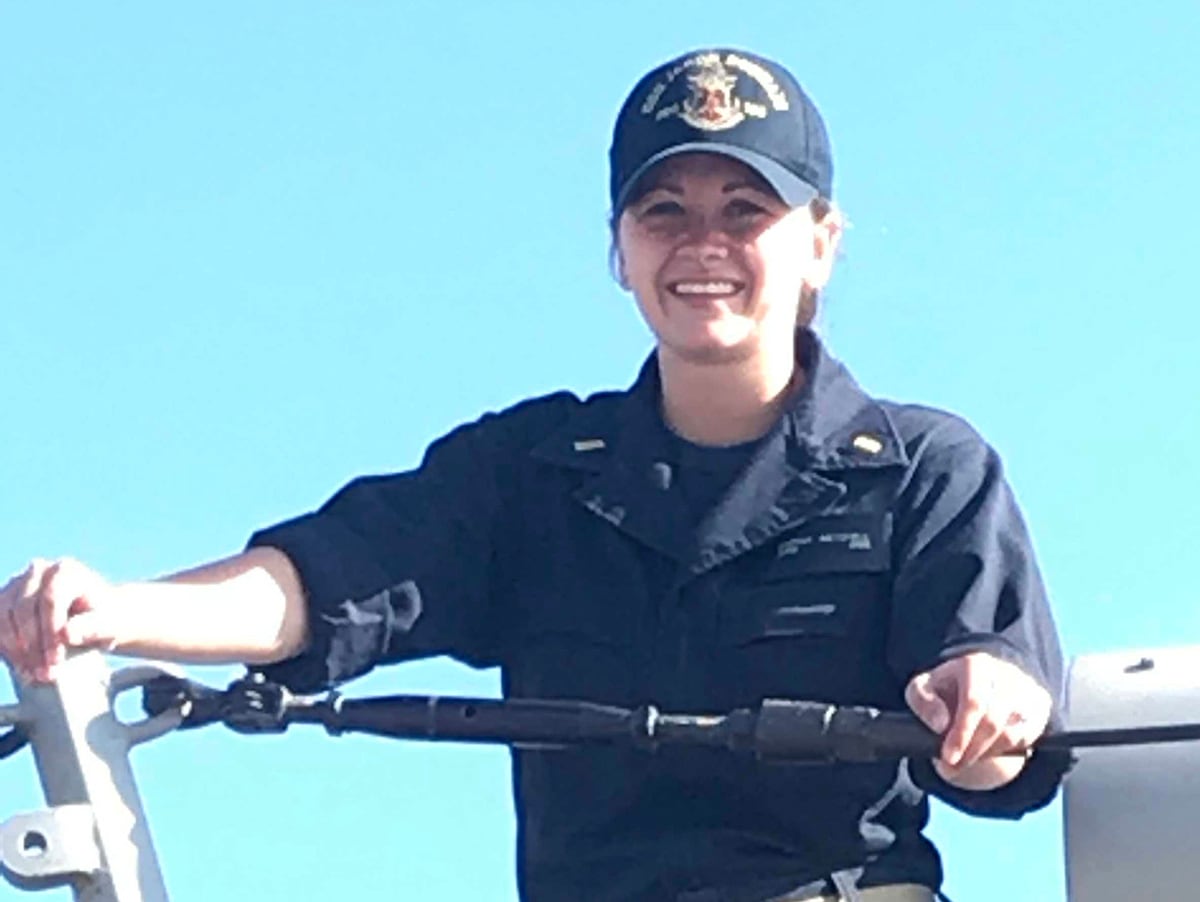
Officials redacted nearly all the names mentioned in the copy of the probe provided to Navy Times following a Freedom of Information Act request — even the identity of the report’s author — but everyone seemed to agree that Ensign Mitchell’s last hours on a RHIB called “Billy Hampton” were spent on a beautiful Red Sea.
“Sun was shining, and seas were flat,” a search-and-rescue swimmer on board the RHIB that day recalled. “We were having a good time…we were happy to be off the ship for the first time in a little while.”
The Dunham was in the early stages of a deployment that would not bring the crew home to Norfolk until December.
Mitchell was serving as the Billy Hampton’s boat officer that day, the first time she had done so since recently qualifying for the duty.
“Everyone was pretty excited that morning,” the small boat’s coxswain recalled. “Everyone likes getting in the RHIB…I thought we were going to do some training, show the midshipmen a good time.”
He’d just gotten off the midnight to 7 a.m. watch when he learned that morning he’d be driving the RHIB.
“I got about two hours of sleep between watch and coming down to the boat deck,” the sailor recalled.
The coxswain had conducted small boat ops with Mitchell back in Virginia and “had total confidence” in her abilities.
“I had heard, ‘this [small boat ops] is what we do to convince you to go SWO,’” a midshipman on another RHIB that day said. “It was a lot of fun.”

Mitchell’s first batch of passengers included a shipmate who held his reenlistment on the waves. The second group was riding the RHIB at 10:21 a.m. when the coxswain began a 50-yard, full-throttle turn to port.
It’s often called a pivot turn in the fleet but was referred to as a “donut” by the sailors in the report.
“ENS Mitchell had just finished telling people to hold between their legs,” the RHIB’s boat engineer that day said. “The hard turn was routine ops.”
The coxswain said he was between 90 to 180 degrees into the move when there came "an impact that jarred everyone to starboard,” jerking his grip off the throttle and nearly jettisoning him from the boat.
“I felt the jolt through the entire boat—from my feet to the console,” the coxswain said. “I have never experienced anything like that in my 15 years of driving.”
“It seemed like the boat skipped,” another sailor recalled.
The RHIB was “tripping,” its stern going airborne before bottoming out on the water.
Mitchell and three other passengers were thrown off the starboard side into the sea.
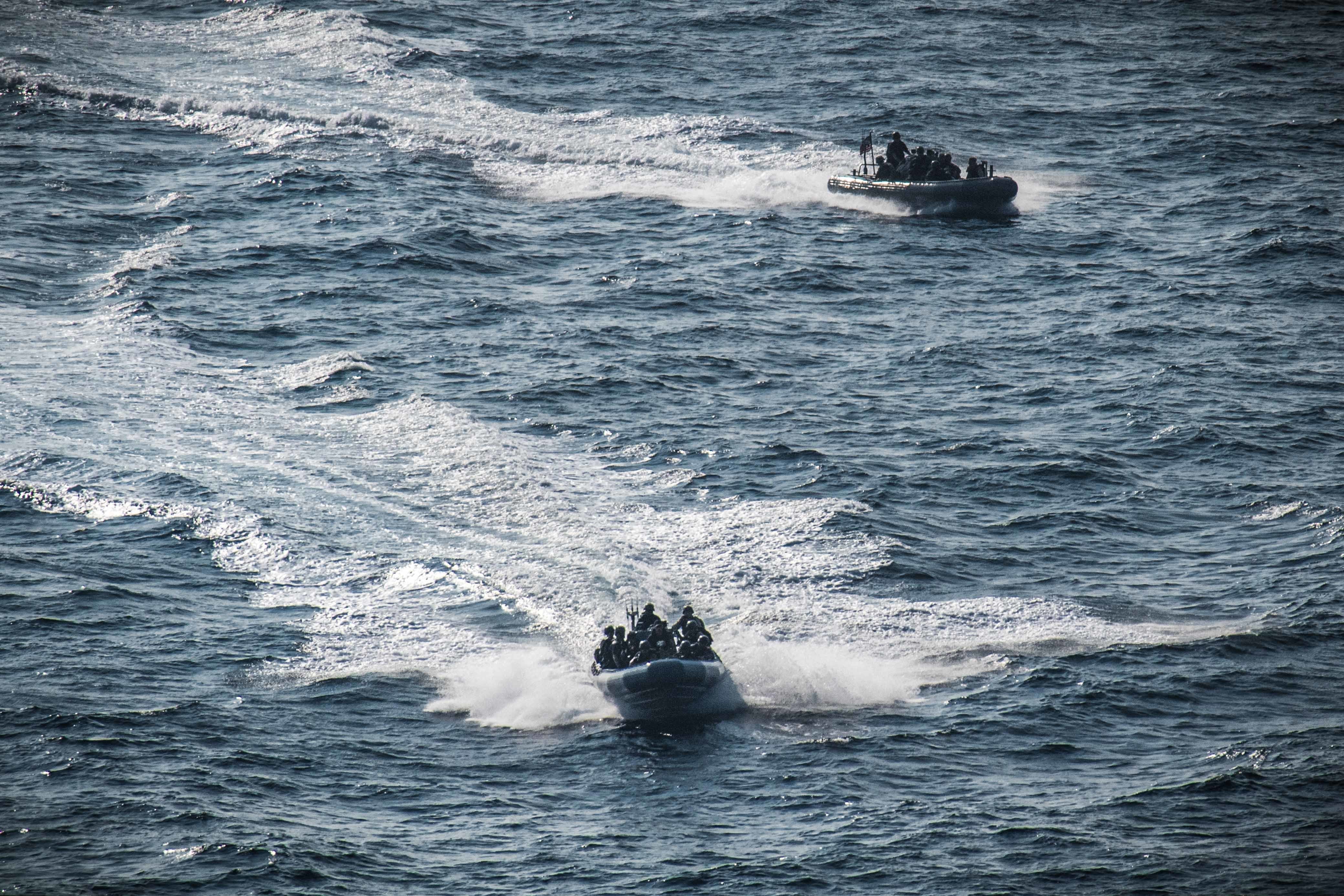
The lead investigator later questioned what the Dunham’s crew had been told about how to ride a RHIB. They said they’d always been told to sit on the side sponson.
But Center for Surface Combat Systems Coxswain School instructors teach that “the sponson functions like a trampoline,” and that passengers should crouch or stand on board a RHIB, using the centerline and inboard lifelines for stability.
“Had personnel been properly instructed on how to ride the RHIB and used the additional safety gear, all four individuals might not have been ejected,” the investigator wrote.
While the coxswain had driven small boats for years, he never attended "any other formal training on operating (seven-meter) RHIBS,” the investigator wrote.
The coxswain said he instead “trained under experienced boatswains.”
Still, his years of experience should’ve "been enough to preclude him from making such a high risk maneuver,” the investigator determined.
Learning about the tripping hazard “is not a pre-requisite for Boat Coxswain qualification,” Capt. Kevin M. Kennedy, then-commodore of Dunham’s parent command, Destroyer Squadron 28, wrote in his investigation endorsement.
“Gaps” in official guidance and personnel qualification standards suggested the coxswain “was not presently aware of the concept of ‘tripping’ and he did not knowingly and intentionally accept unmitigated risk to do so,” Kennedy wrote.
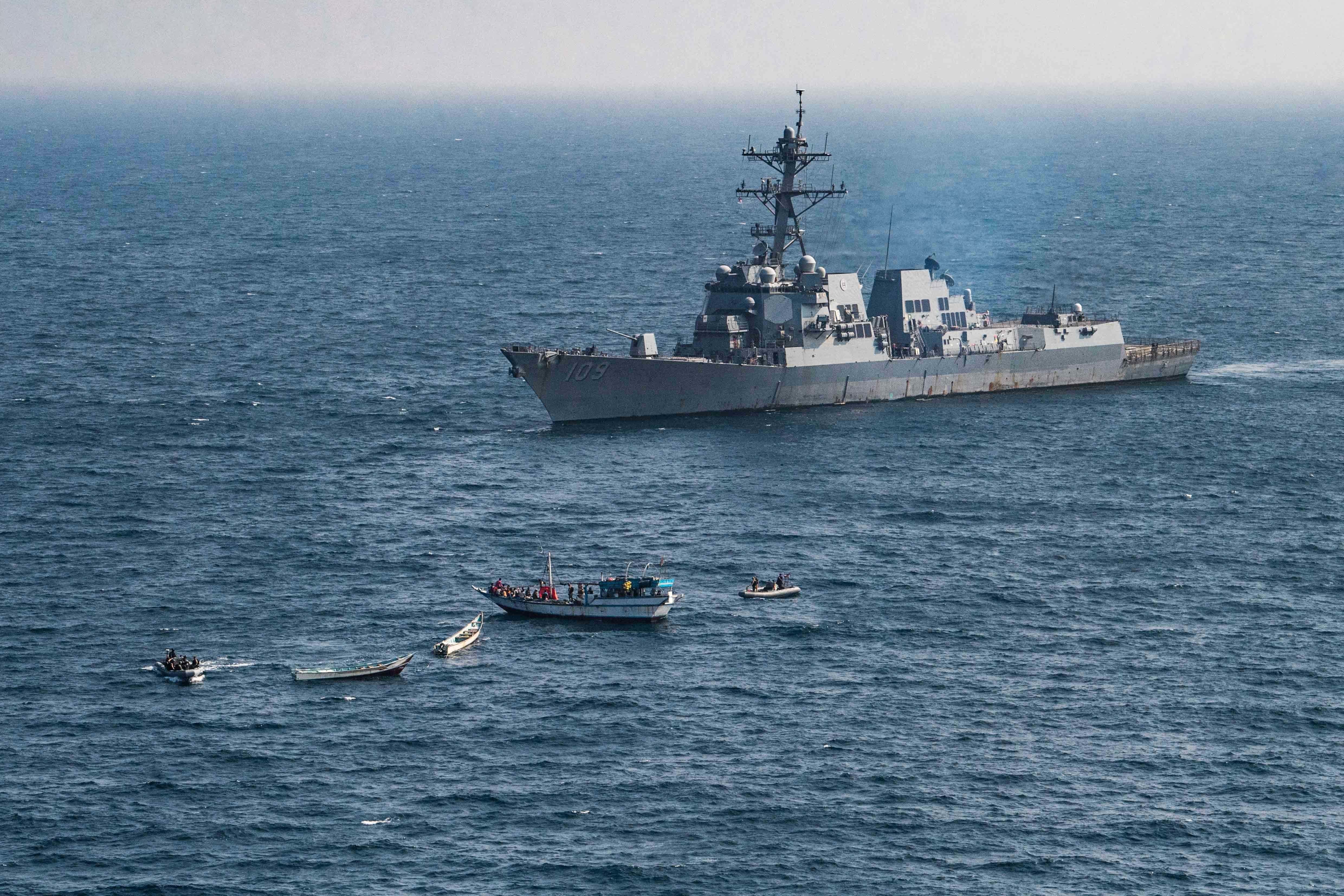
Recovering from the trip, the coxswain pulled himself back up and turned the RHIB to port to straighten out and stop the turn. As he killed the propeller “we hit ENS Mitchell,” he said.
She’d passed directly under the boat and was "struck on the head by the stern drive, which inflicted severe head trauma,” the investigating officer wrote.
The RHIB’s rescue swimmer had loosened his grip and allowed himself to get “tossed” when he saw the others go overboard. As he neared Mitchell, he found her floating face down “surrounded by a cloud of blood.”
“Her injuries were too significant to recognize her,” the rescue swimmer recalled. “I can’t stress enough the severity of this injury.”
“Oh God, oh God,” sailors recalled the coxswain saying. “What did I do?”
“I tried to distract the midshipmen from looking at ENS Mitchell,” the boat engineer said. “I knew it would upset them to keep looking.”
The RHIB’s engine died.
Mitchell’s life jacket was wrapped in the propeller.
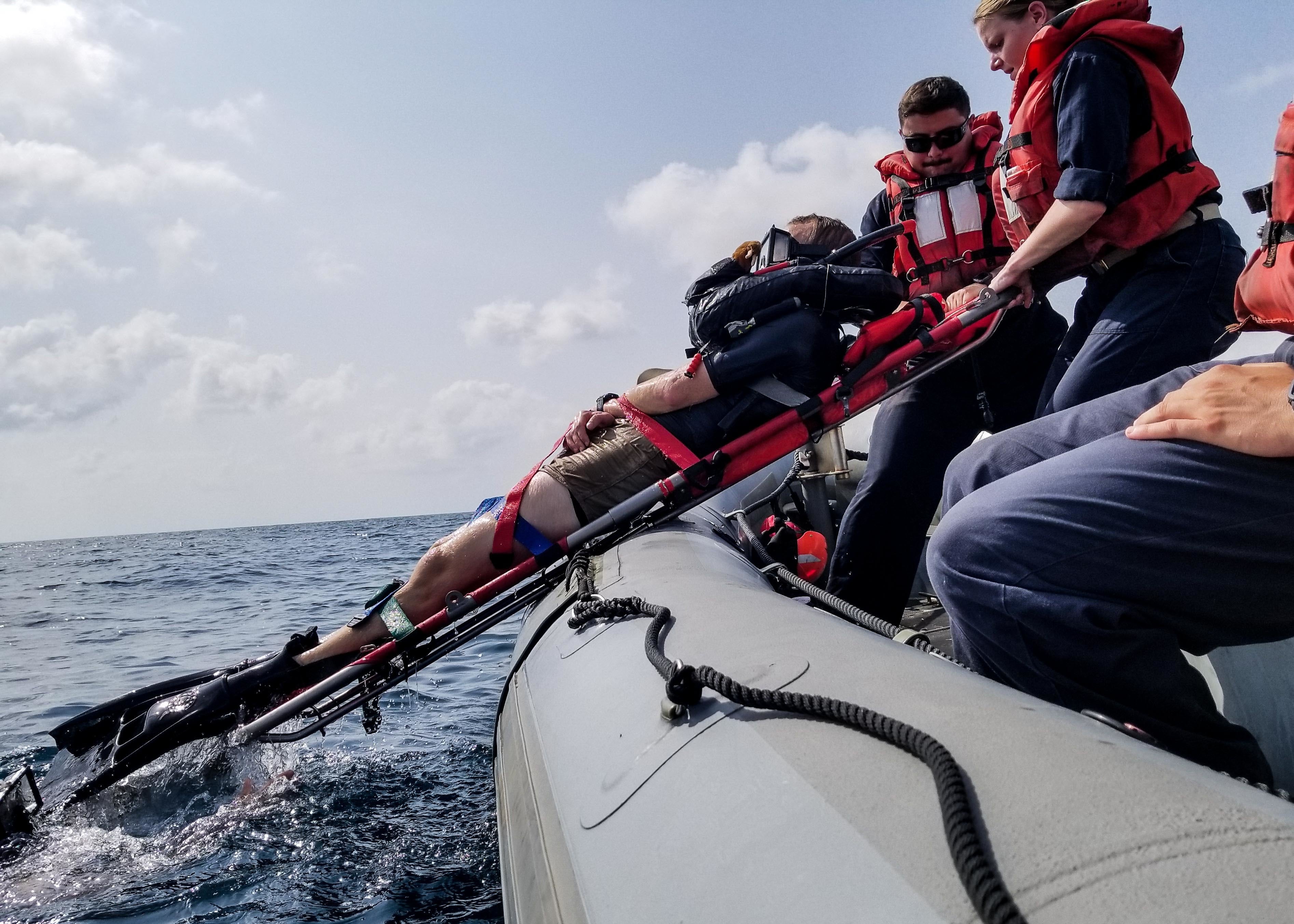
Nearby, the crew of the RHIB “Kelly Miller” was conducting their own training. When they heard “man overboard” cries, they raced to help Mitchell’s stricken RHIB.
None had been prepared for what they were about to encounter.
“There is no local training at JASON DUNHAM on what to do in this kind of scenario,” one sailor said.
The Hampton’s coxswain later told the investigator that he’d never trained for man overboard from a RHIB. It had never even occurred to him that he’d have to confront it.
But the sailors placed an unrecognizable shipmate into the Miller and sped back to the destroyer.
“We were asked who the victim was and that’s when I saw her coveralls and belt buckle and saw that it was ENS Mitchell,” one sailor recalled.
Only later did the rescue swimmer realize that the injured shipmate was Mitchell, his division officer.
At the Dunham’s side, crews struggled to get her off the RHIB.
The rescue swimmer recounted how their use of a Stokes Litter “shocked me.”
“It is not configured for recovery, nor does it have installed flotation for over-water rescue,” the swimmer said.
Shipmates considered lifting the entire RHIB, but that would be too heavy with passengers still on board.
Mitchell eventually was brought aboard the ship on a Reeves Sleeve stretcher, which had a single hoisting attachment, meaning the she went up vertically.
“About halfway up the side the heaving motion caused her head to slip out of the headband and fall,” the swimmer said. “This was absolutely horrifying and had a tremendous effect on the boat crew.”
“I have not had training on how to raise this kind of litter from a RHIB to the ship,” the Miller’s coxswain told investigators.
The coxswain wasn’t alone.
“No one interviewed had ever been trained to or evaluated on hoisting an injured person from a RHIB despite being fully qualified and certified,” the investigator concluded.
When she made it to the top, the waiting corpsman confronted severe injuries that exceeded what could be treated on board the destroyer. But she still had a weak yet palpable pulse.
The independent duty corpsman cut an incision in her throat to open her airway.
“She was alive when she came on board but the disposition was not looking optimistic,” the corpsman later said. “If she recovered, I would not have expected her to have any sort of normal life.”
A helicopter flew Mitchell off the ship at 11:30 a.m. and she was pronounced dead 75 minutes later at Prince Hashem bin Abdullah Hospital in Aqaba, Jordan.
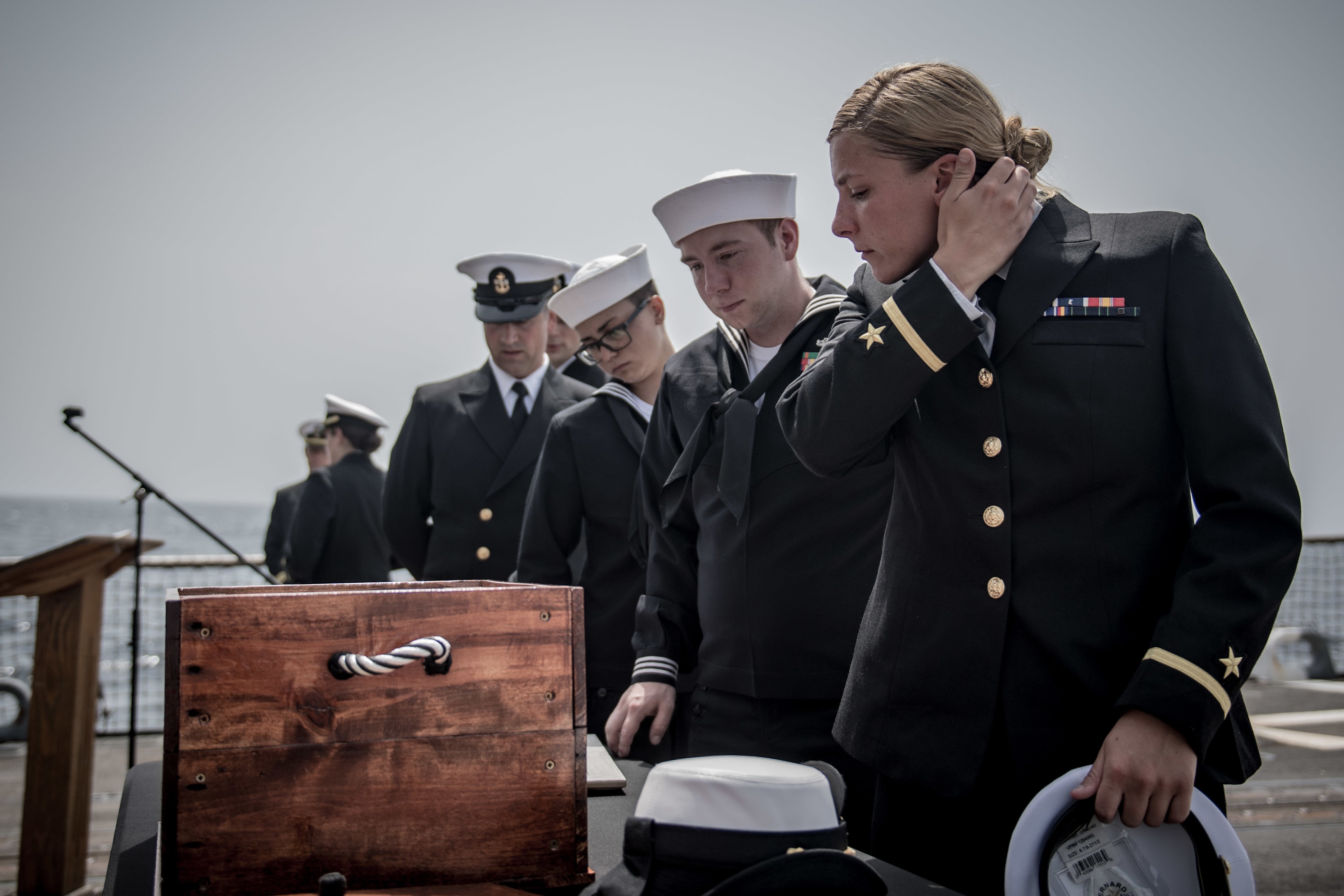
While the probe urged that the RHIB’s driver be disciplined, it also recommended administrative action against the Dunham’s commanding and executive officers, plus several other unnamed leaders on the warship.
Exactly who was punished for what remains unclear.
The head of Destroyer Squadron 28 signed off on the official investigation into the accident 19 days after Mitchell’s death “and took appropriate corrective actions against several personnel assigned to the crew,” U.S. Fleet Forces Command spokesman Cmdr. Sarah Self-Kyler told Navy Times.
“Because these actions were administrative in nature, I am not able to provide details or specific information due to Privacy Act regulations,” she said.
The investigating officer, and the admirals who endorsed the investigation, chided the Dunham’s leadership for not ensuring that planning and briefing were done for that day’s RHIB exercises like they would for other training events.
During their deployment, the destroyer’s crew had practiced on small boats twice before the accident, “raising the concern of whether the operation was truly routine,” according to the investigation.
The RHIBs that day were filled with inexperienced passengers, mostly boat officers-in-training and Naval Academy midshipmen, raising the risk of tragedy.
“By properly planning and briefing, leadership could have identified risks and provided guidance on the purpose the training,” the investigator wrote. “This could have extinguished any ideas of ‘joy riding,’ ‘showing off’ or taking the RHIBs to their limits.”
RELATED
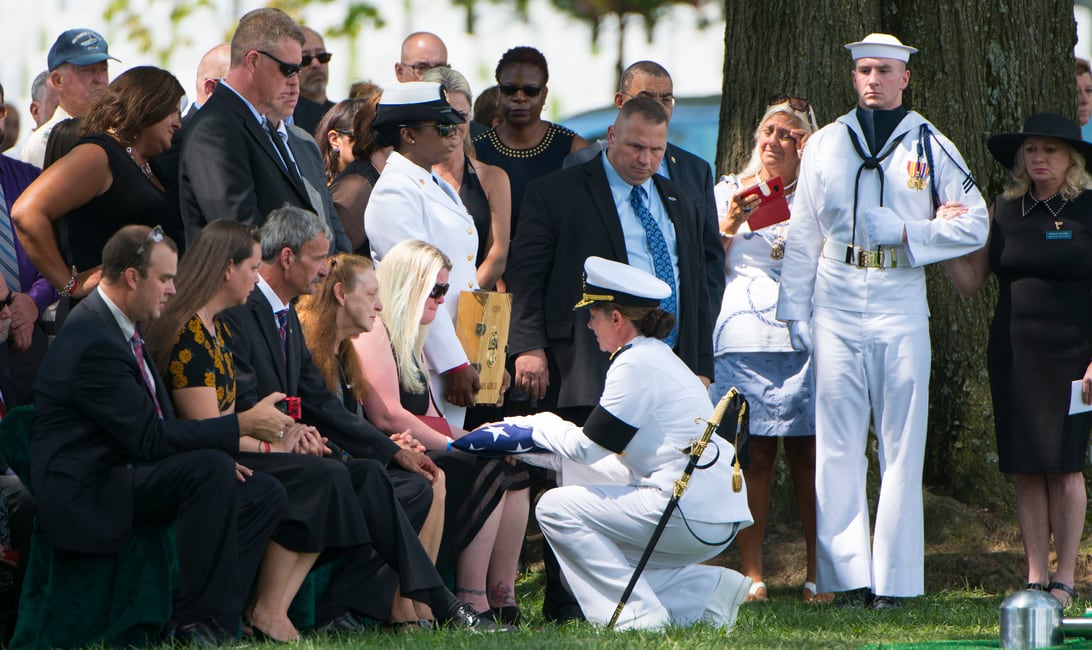
The report’s author also determined that a busy tempo of operations that day and “task saturation” contributed to lackadaisical planning for the exercise.
But in his endorsement letter, Destroyer Squadron 28′s former commodore Kennedy pushed back on the finding, saying the warship’s schedule that day "was what I would expect for a multi-mission platform at the peak of its readiness on deployment.”
Kennedy agreed that leaders “must speak hard truth to higher” when task saturation and similar problems arise, but the ship “had not reached this point.”
Although the coxswain on Mitchell’s RHIB was operating a boat on little sleep and other passengers also lacked rest, Kennedy attributed that to a lapse in proper planning.
“I do not believe this tragedy would have been avoided with better planning alone,” he wrote.
The late Vice Adm. Scott Stearney ― then the commander of the Bahrain-based U.S. 5th Fleet — wrote in his November endorsement that the warship lacked “the rigor of formality” during operations and training that day.
“Ultimately, the Commanding Officer, backed up by the entire chain of command, is responsible and accountable for setting and reinforcing this culture of formality, and its failure on 8 July,” Stearney wrote.
Stearney also determined that the probe raised "questions regarding the safety and adequacy of the 7 meter RHIB, including adequate seating and hand-holds for passengers and crew.”
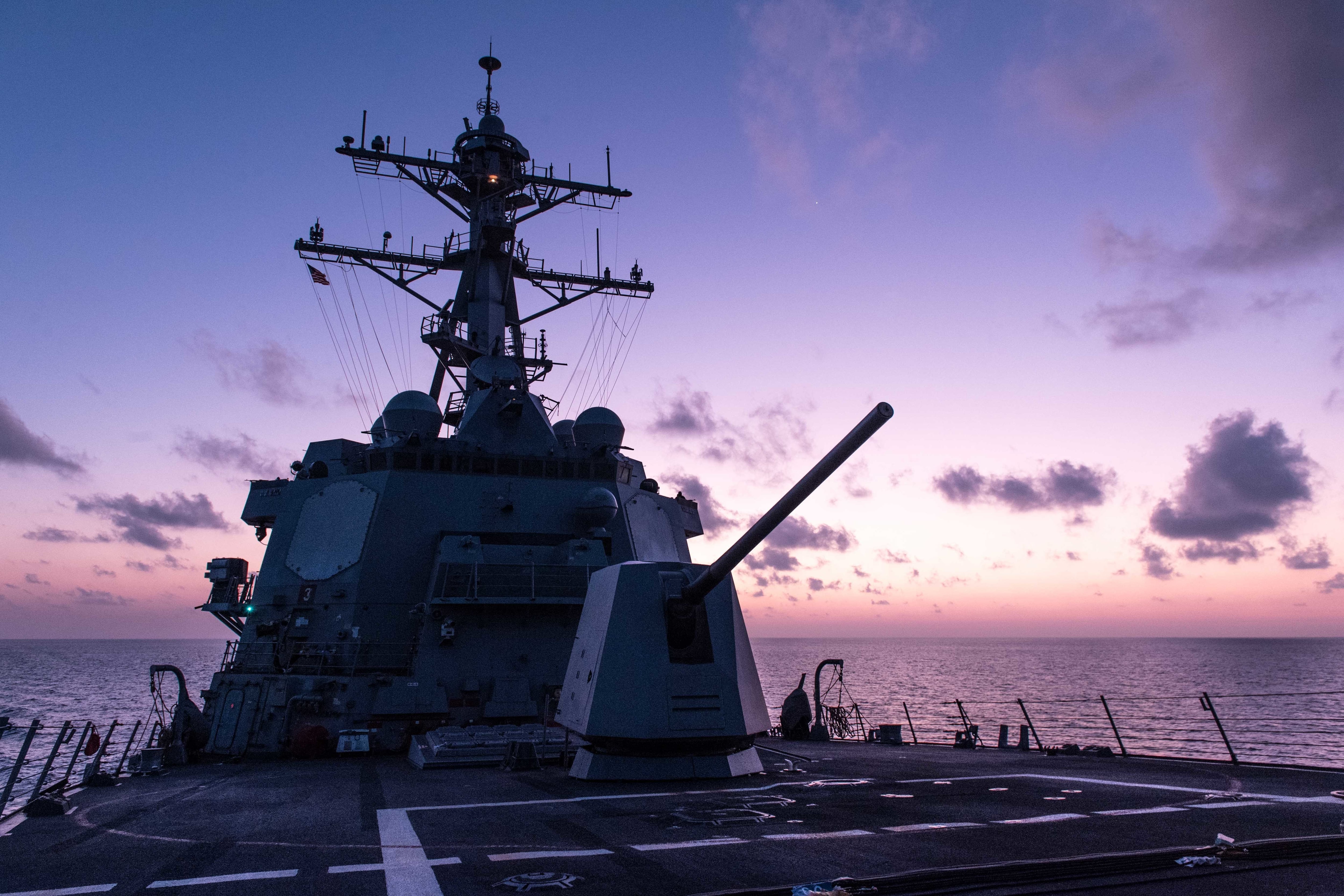
Ensign Mitchell did not die in vain.
The accident exposed glaring shortfalls in how the Navy had been operating small boats for years, problems officials consistently failed to consider until her tragic death.
In the wake of the probe, the surface fleet conducted a review and a safety stand down and the sea service updated training and curriculum “to ensure small boat fundamentals include the use of the centerline lifeline and proper passenger distribution,” Fleet Forces spokeswoman Self-Kyler said.
“The review resulted in improvements to crew qualification standards, training curricula, safety features in the small boats, and administrative processes,” Self-Kyler added.
“We will never forget the lessons she, and this tragic event, have taught us,” Rear Adm. Roy Kitchener, the head of Naval Surface Force Atlantic, said in a prepared statement provided to Navy Times.
“The Surface community has learned from this incident, and we will continue to improve surface force operations to prevent situations like this in the future,” he said. “We owe it to our Sailors to keep them safe and ready.”
But the four-star admiral at the helm of Fleet Forces Command suggested in his May endorsement of the investigation that the Navy could have shored up those issues before they claimed the life of a gifted young officer.
“A tragic and unfortunate series of events led to Ensign Mitchell’s death,” Adm. Christopher Grady wrote.
“While the execution of safe boat operations and incorporation of (formalized planning and briefing) may have prevented this accident, there are still several inconsistencies in guidelines in our training pipeline that should have been addressed earlier.”
Geoff is the managing editor of Military Times, but he still loves writing stories. He covered Iraq and Afghanistan extensively and was a reporter at the Chicago Tribune. He welcomes any and all kinds of tips at geoffz@militarytimes.com.





